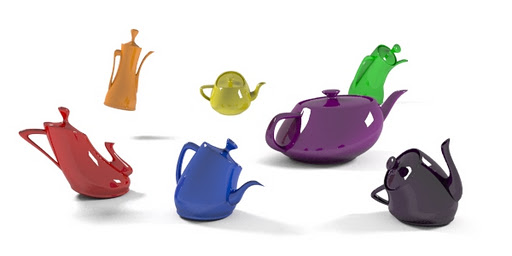Showcasing your next best product in a white studio lighting environment seems very simple. In actuality, doing this correctly or "physically accurate" is really more complex than you'd think.
If you tried to render the above image the way you thought you should do it, you would probably would have set your background environment to white, then place all of your objects on a white plane, then hit render. But this is what you get:
It's not exactly what you wanted. So to fix this, the answer lies in a production material called the Matte/Shadow/Reflection shader. This is a material that does some nice trickery and saves you alot of work to render your scene with a different "environment." This can be found under the mental ray materials in the Material Map Browser. Simply apply this material to your ground plane. Of course you'll have to change the "Camera Mapped Background" color to white if that's what you want.
The scene setup is very simple for this example. I have 2 photometric area lights, and a plane that my teapots are sitting ontop of. That's it. Simply apply the Matte/Shadow/Reflection material to your plane and you're done...you have now created a white studio light setup. You may also notice that the objects in the studio rendering, are lighter than they are in the regular rendering. This material renders your objects to bounce light as if the scene were white, so your objects are also reflecting the white scene, hence physically accurate lighting.
The MSR material can also be used to create mattes to render certain objects that need to reflect an environment, and can be composited later in post.
There is one thing to note: I've found this material to act really weird if Exposure is turned on. So before you start setting your lights, bear in mind you'll want to set up your scene without exposure.
This is what happens if you use the MSR material with mr Photographic Exposure Control...weird!




No comments:
Post a Comment